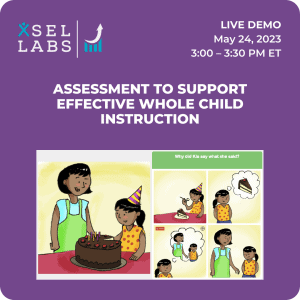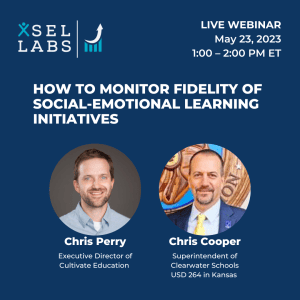Well-intended colleagues in the SEL community sometimes encourage school districts to create their own social and emotional competence assessments. They do so, as far as I can tell, with the intention of encouraging educators to create SEL competence assessments that are meet their specific needs. That is a laudable goal. Often, it is also bad advice.
Still, many schools and districts follow this guidance. For some, this is because the field of social and emotional competence assessment is relatively new, so many educators are unaware of the well-constructed assessment options that can meet their needs. For others, the idea of creating a custom assessment seems more appealing and cost-effective than purchasing an assessment from a vendor.
Build vs. Buy SEL Competence Assessment
I’d like to encourage schools and districts to frame this as a “build versus buy” decision. To make this decision, consider these two questions:
- If we build our own SEL competence assessment, will we obtain technically sound and useful assessment data?
- If we build our own SEL competence assessment, will we save money?
If the answer both questions is “no,” then buy, don’t build. If the answer to both questions is “yes,” then build, don’t buy. Note that answering question 1 requires an understanding of what it means for an assessment to be technically sound and useful. Those who don’t develop assessments for a living often radically under-estimate what it takes (time, money, data) to create and validate a good SEL competence assessment. So if you answer “yes” to question 1 (our assessment will be technically sound and useful), be sure that you are correct. Otherwise, you may find yourself down the proverbial rabbit hole, where you’ll find yourself with a poor quality assessment, an unanticipated expenditure, or both.
I would argue that if the answer to question 1 is “no” (you are not sure the assessment you build will be technically sound and useful) but the answer to question 2 is “yes” (building the assessment will save money), you should proceed with caution! This option amounts to “you get what you pay for.” The price makes it tempting, but it will take staff time and attention and the assessment data may not help you achieve your assessment goals.
If the answer to question 1 is “yes” (the assessment will be technically sound and useful) and the answer to question 2 is “no” (you won’t save money), you have a decision to make. If you feel that building your own assessment will meet your needs better than anything on the market, and the value of doing so is greater than the incremental cost of building, go forth and create an assessment! (But be realistic about the cost.) If a commercially available option is available that meets your needs and is close to what you could get from creating your own assessment, consider buying instead.
Do-It-Yourself SEL Competence Assessment
Okay, now let’s unpack the questions. First, how will you know if you will save money? Most SEL competence assessments cost a few dollars per child per year. Some are free (see note above on getting what you pay for.) And no matter how economical it may seem, DIY is not free—it includes staff time to develop and field test the assessment, to meet with staff, and to collect, manage, analyze, and report the data. I would venture to say that for most districts to develop their own high-quality social and emotional competence assessment would cost many times that of a commercially available assessment. The only DIY assessment that will save money will likely be low-quality.
This gets us to the question of whether the DIY assessment will give you technically sound and useful data. It is highly likely that unless you invest substantial resources, you will not know what the technical properties of a DIY assessment are—things like score reliability and validity are not easily established. Without doing careful validation studies, you may never know, and the safest assumption will be that score reliability and validity are not adequate. Regardless, if you are going down the DIY path, please understand what reliability and validity are and what evidence you will realistically be able to marshal to establish those properties in your SEL competence assessment.
High-Quality SEL Competence Assessment
There are high-quality SEL assessments designed to measure competencies that are in the CASEL model and in state standards, and that are the focus of instruction in the most widely used SEL programs. The assessment developers, including xSEL Labs, have made substantial investments to develop and validate their assessments, and to construct them so that they are feasible to administer at scale, easy to interpret, and are useful for pursuing your assessment goals. Two guides provide information about validated SEL competence assessments: CASEL Assessment Guide and RAND Education Assessment Finder.
Admittedly, xSEL Labs has an interest in the decision you land on. However, I offer this guidance in the sincere hope that you make a thoughtful decision about whether to build or buy, so you engage in SEL assessment—be it home-made or purchased—having fully considered the pros and cons and achieve to meet your assessment goals in a cost-effective way.



